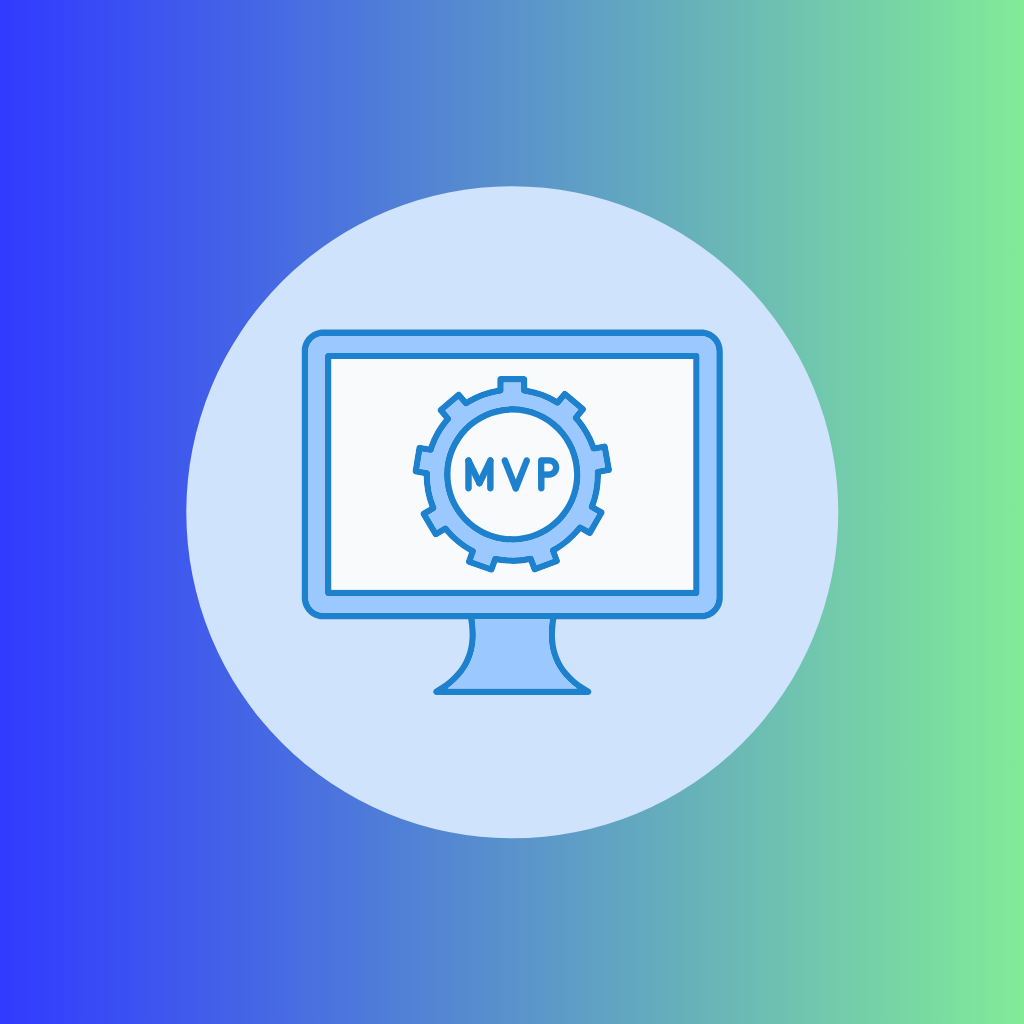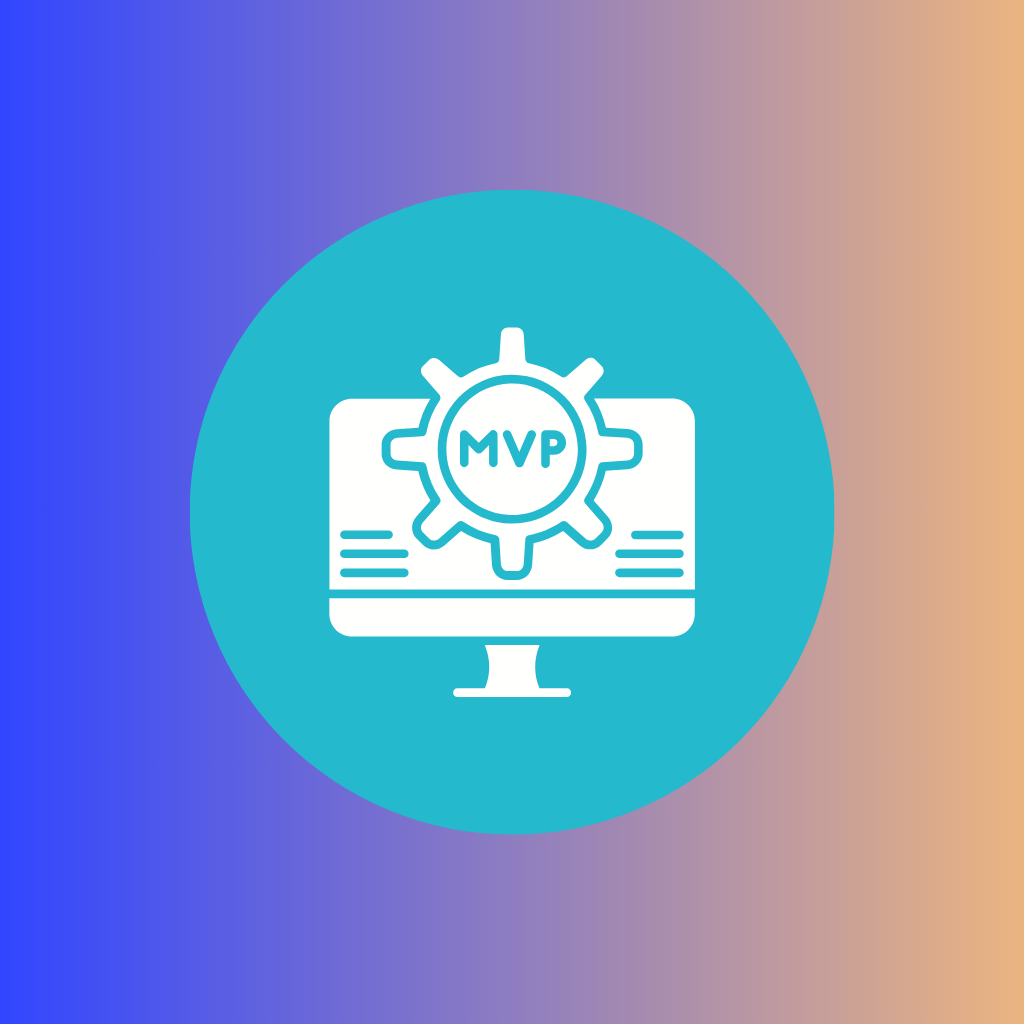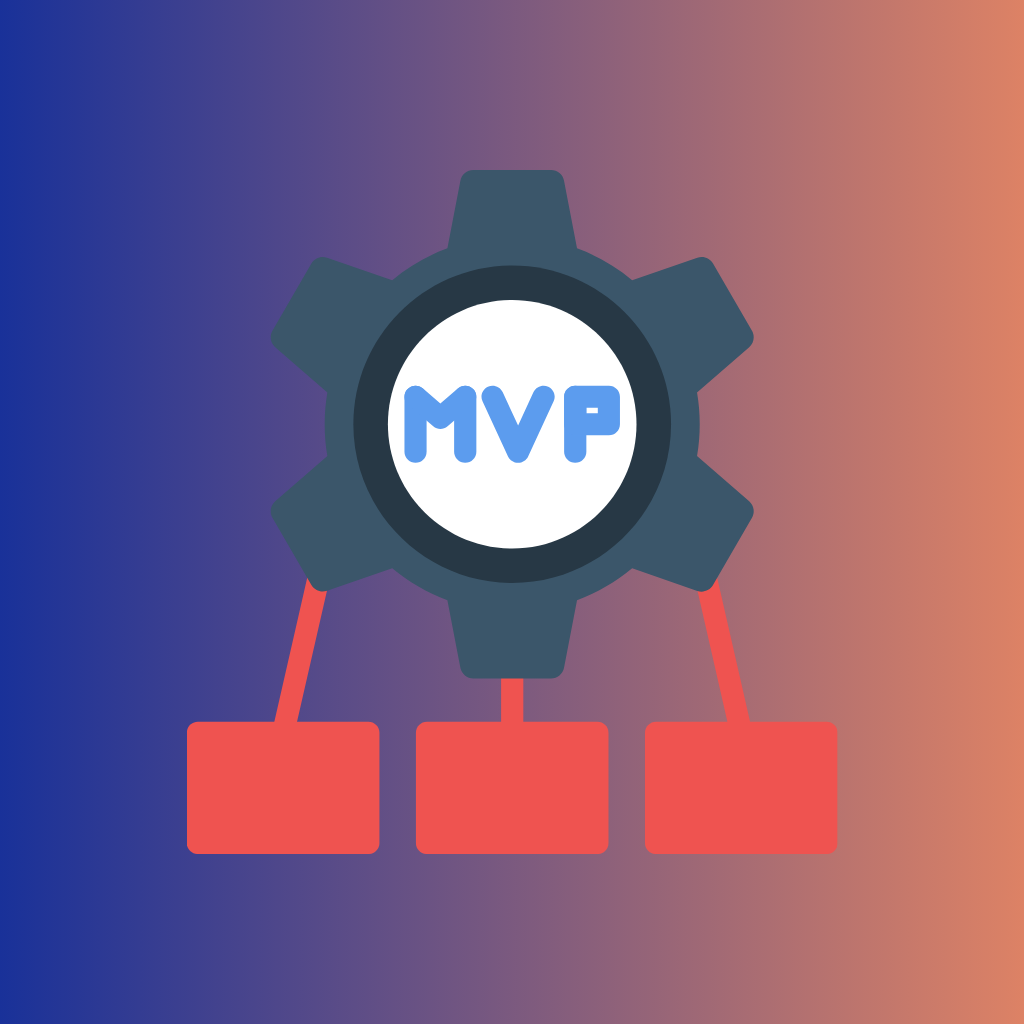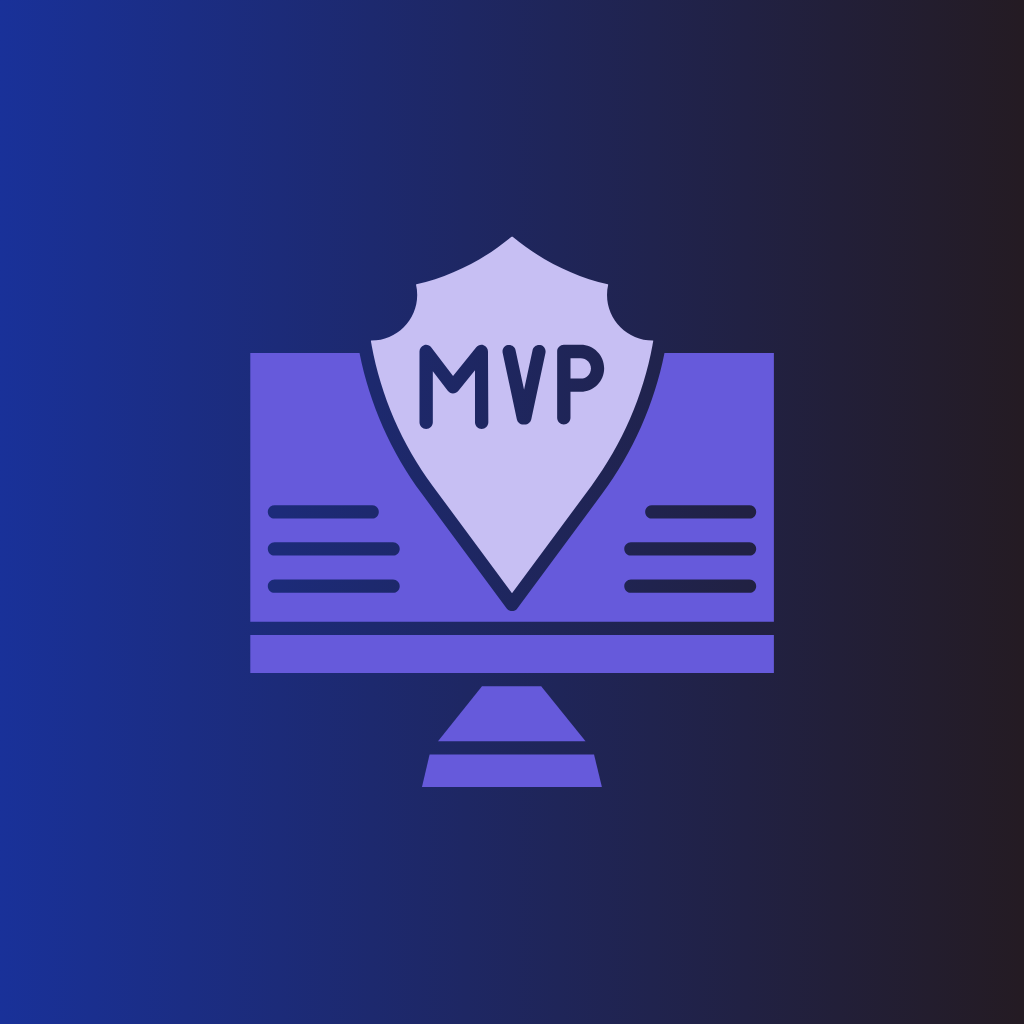In the fast-paced world of app development, the concept of a Minimum Viable Product (MVP) stands out as a pivotal strategy for tech entrepreneurs and startups. An MVP, in its essence, represents the most basic version of your product that still delivers core value to your users. This approach allows you to launch your app to the market swiftly, gathering invaluable feedback early in the development cycle, and ensuring that your product evolves in direct response to real user needs.
The launch phase of your MVP is an opportunity to learn, adapt, and refine. It's the moment when your product moves from concept to reality, engaging with actual users in the market. The insights gained during this phase, particularly through qualitative feedback, are very valuable to shape your app's future.
Understanding the significance of the MVP launch and the subsequent feedback process is crucial for any app developer or entrepreneur. It's not just about putting your product out there; it's about creating a foundation for continuous improvement and user-centric development. This blog post aims to guide you through the intricacies of launching your MVP successfully and setting up a robust system to gather and act on qualitative feedback. Through strategic preparation, execution, and iteration based on user insights, you'll be well on your way to transforming your MVP from a basic prototype to a thriving, user-loved product.
I. Pre-Launch Preparation
The journey of an MVP begins long before its actual launch. Pre-launch preparation is a critical phase where the groundwork is laid for a successful introduction to the market. This stage is about ensuring that the MVP is not just viable but also primed for user engagement and feedback collection. Let's explore the key components of this phase:
A. Finalizing Core Features
The essence of an MVP is to focus on core functionalities that address the primary needs of your users. It's crucial to identify and refine these features so that they align with your target audience's expectations and solve a specific problem. By concentrating on essential functionalities, you can allocate resources efficiently and avoid the pitfalls of overcomplication, which can dilute the user experience and make feedback harder to interpret.
B. Beta Testing
Before the public gets its hands on your MVP, it's imperative to conduct thorough beta testing. This internal testing phase aims to identify and rectify any critical issues that could hinder user experience or functionality. Beta testing provides an initial layer of feedback and ensures that your MVP is in the best possible shape for your target audience. It's about ironing out the kinks and setting the stage for a smoother public reception.
C. Setting Up Feedback Channels
Effective feedback collection is rooted in how well you set up channels for users to share their insights. Whether it's through in-app feedback forms, email surveys, or direct communication channels, the goal is to make it easy and intuitive for users to voice their experiences and thoughts. The feedback mechanisms should be designed to encourage users to provide detailed and constructive feedback, which is invaluable for the iterative development process that follows the launch.
By meticulously addressing each of these pre-launch preparation steps, you're not just setting the stage for the launch itself but also ensuring that the foundation is solid for collecting meaningful, qualitative feedback that will guide your MVP's evolution.
II. Crafting a Launch Strategy
Once your MVP has been honed through pre-launch preparation, the next crucial step is crafting a thoughtful launch strategy. This strategy is your roadmap for introducing the MVP to your target audience, capturing their attention, and setting the stage for feedback collection. It involves understanding who your users are, where to find them, and how to communicate your product's value effectively. Let's break down the key components of a successful launch strategy:
A. Target Audience: Identifying and Understanding Your Demographic
The success of your MVP hinges on its resonance with the target audience. Understanding who your users are, what they need, and how they behave is fundamental. This knowledge informs every aspect of your launch strategy, from the messaging to the choice of platforms.
- Research: Conduct thorough market research to define and understand your target demographic. Who are they? What are their pain points, preferences, and habits?
- Personas: Create user personas to represent your typical users. These personas can guide your decision-making process and help ensure that your launch strategy aligns with user expectations.
- Feedback Loops: Establish initial feedback loops with potential users, perhaps through focus groups or early access programs, to refine your understanding and approach.
B. Launch Platforms: Selecting the Right Avenues
Choosing the right platforms to launch your MVP is crucial for reaching your intended audience. Whether it's through app stores, social media, or your own website, the platform should align with where your target audience spends their time and seeks solutions.
- App Stores: Ensure your MVP meets all the necessary guidelines and requirements for listing on platforms like the Apple App Store or Google Play Store. Optimize your app's listing with compelling descriptions, screenshots, and keywords.
- Website: If you're launching through your own website, ensure that it's optimized for user engagement, with clear calls to action and easy navigation.
- Alternative Platforms: Consider other platforms relevant to your audience, such as industry-specific forums or marketplaces, to broaden your reach.
C. Marketing Communications: Crafting Your Message
The way you communicate your MVP's value proposition is pivotal in attracting users and setting the tone for their expectations.
- Messaging: Develop clear, concise, and compelling messaging that highlights the core benefits of your MVP. Why should users care? What problem does it solve for them?
- Multimedia: Utilize various forms of content, like videos, blogs, and infographics, to convey your message across different channels effectively.
By meticulously planning each aspect of your launch strategy, you ensure that your MVP reaches the right audience, with the right message, at the right time. This strategic approach not only facilitates initial user acquisition but also sets the foundation for a robust feedback loop that will fuel your MVP's growth and evolution.
III. Executing the Launch
After careful preparation and strategic planning, executing the launch of your MVP is the critical moment where your product meets the public. This phase is about turning plans into action, monitoring the initial reception, and beginning the crucial process of gathering feedback. Let's delve into the key steps for effectively executing your MVP launch.
A. Initial User Acquisition: Attracting Early Users
The initial wave of users can set the tone for your MVP's future, providing the first round of feedback and establishing a user base that can grow through word-of-mouth.
- Promotional Campaigns: Utilize your prepared marketing materials and strategies to create buzz. Whether through social media, email marketing, or partnerships, your aim is to attract users to your MVP.
- Incentivization: Consider using incentives like limited-time offers, discounts, or exclusive access to encourage sign-ups and trials.
- Influencer Partnerships: Collaborating with influencers or industry experts can amplify your reach and lend credibility to your MVP.
C. Monitoring: Keeping a Close Eye on Performance
With the launch underway, closely monitor your MVP's performance and user interactions. This real-time data will provide invaluable insights and guide immediate and long-term adjustments.
- Analytics Tools: Employ analytics tools to track user behavior, engagement levels, and other key metrics. This data will help you understand how users are interacting with your MVP and where there might be friction points.
- User Feedback: Pay close attention to the initial feedback coming from your users. This can be through direct channels, like feedback forms or support requests, or indirect channels, like social media conversations.
- Adaptability: Be prepared to make quick adjustments. Whether it's fixing a critical bug or addressing a common user complaint, responsiveness in the early stages can significantly impact user retention and perception.
Executing the launch of your MVP is a dynamic and critical phase that sets the foundation for your product's trajectory. By carefully managing timing, user acquisition, and monitoring, you can maximize the impact of your launch and establish a strong basis for continuous improvement and growth based on user feedback.
IV. Gathering Qualitative Feedback
After successfully launching your MVP, the next pivotal step is gathering qualitative feedback, which is crucial for understanding user experiences, preferences, and challenges. This type of feedback provides depth and context that quantitative data alone cannot offer, allowing you to make informed decisions about future iterations of your product. Here's how to effectively collect and utilize qualitative feedback from your users.
A. Importance of Qualitative Feedback
Qualitative feedback offers rich insights into the 'why' and 'how' behind user behaviors, going beyond what is captured by mere numbers or metrics. It helps uncover user motivations, frustrations, and desires, providing a comprehensive view of their experience with your MVP.
- User Empathy: Qualitative feedback helps build empathy with your users, offering a window into their perspectives, which is invaluable for user-centric product development.
- Problem-Solving: Understanding the nuances of user feedback can highlight specific issues or opportunities, guiding targeted enhancements to your product.
B. Methods of Collection
There are several effective techniques for collecting qualitative feedback, each with its own strengths. Employing a mix of methods can provide a well-rounded understanding of user experiences.
- User Interviews: Conduct one-on-one interviews with users to dive deep into their experiences, opinions, and suggestions. These sessions can uncover detailed insights and allow for follow-up questions to probe deeper.
- Surveys with Open-Ended Questions: While surveys are often quantitative, including open-ended questions allows respondents to provide more context and detail, offering qualitative insights.
- User Testing: Observational studies or usability tests, where you watch users interact with your product, can reveal where they encounter difficulties or experience delight.
- Direct Observation: Sometimes, direct observation in a user's natural environment can provide invaluable context that other methods may miss.
C. Encouraging User Engagement
Getting users to share their thoughts and experiences can be challenging. Here are strategies to encourage engagement and ensure you're gathering meaningful feedback:
- Ease of Access: Make providing feedback as easy and straightforward as possible. Whether it's in-app prompts, accessible feedback forms, or dedicated channels, reducing friction encourages more users to share their insights.
- Incentivization: Offer incentives for feedback, such as access to exclusive features, discounts, or even direct rewards. This can motivate users to take the time to provide their insights.
- Acknowledgment: Let users know their feedback is valued. Acknowledge receipt of their feedback and, where possible, communicate how their input is influencing the product roadmap.
Gathering and acting upon qualitative feedback is a continuous process that should be ingrained in the lifecycle of your MVP. By understanding the depth and breadth of your users' experiences, you can iterate your product in a way that truly resonates with your target audience, enhancing user satisfaction and loyalty over time.
V. Analyzing and Acting on Feedback
Once you've gathered a substantial amount of qualitative feedback, the next crucial step is to analyze this data and act upon it to refine your MVP. This stage influences the direction of your product's evolution, ensuring that it increasingly aligns with user needs and expectations. Here's a structured approach to dissecting and leveraging the feedback you've collected.
A. Identifying Patterns and Themes
The first task in analyzing feedback is to sift through the data to identify common patterns or recurring themes. Since qualitative feedback is often unstructured, this process involves a degree of interpretation and synthesis.
- Categorization: Organize feedback into categories based on similarities. This could be related to specific features, user experiences, or broader aspects of your product.
- Thematic Analysis: Look for overarching themes that emerge from the feedback. These themes can offer insights into broader user sentiments and areas that need attention.
- User Stories: Convert recurring feedback points into user stories or scenarios. This can help in visualizing the user's perspective and understanding the context of their feedback.
B. Prioritization: Deciding What to Act On First
Not all feedback is created equal. Prioritization helps you decide which pieces of feedback should be addressed immediately and which can be scheduled for later.
- Impact vs. Effort Analysis: Evaluate feedback based on the potential impact of addressing it versus the effort required. This can help in allocating resources efficiently.
- Alignment with Goals: Ensure that the feedback you prioritize aligns with your broader business objectives and product goals. Feedback that steers your product in the right direction should be given precedence.
- User Impact: Consider how many users are affected by a particular issue or have expressed a similar need. Feedback that affects a larger segment of your user base typically deserves higher priority.
C. Iteration: Implementing Changes Based on Feedback
Acting on feedback is where the real work begins. Implementing changes based on user insights is critical for the iterative development process, demonstrating your commitment to user satisfaction.
- Rapid Prototyping: For significant changes, use rapid prototyping to test new ideas and improvements before fully implementing them. This can save resources and help gauge user response to changes.
- Continuous Deployment: Implement smaller changes in a continuous deployment cycle, allowing for quick improvements and immediate user feedback on those adjustments.
- Measuring Impact: Once changes are implemented, closely monitor how they affect user experience and engagement. This will not only validate your decisions but also inform future iterations.
D. Feedback Loop Closure
Closing the feedback loop with users is an often overlooked but essential part of the process. It reinforces the value of user input and can foster a more engaged and loyal user base.
- Communicate Changes: Inform users about the changes made based on their feedback. This can be through app updates, newsletters, or direct communication.
- Follow-up: For users who provided significant insights, consider reaching out personally to thank them and maybe even invite them to test the new improvements.
- Encourage Continuous Feedback: Make it clear that user feedback is an ongoing process, encouraging users to continue sharing their experiences and suggestions.
By systematically analyzing and acting on user feedback, you transform qualitative insights into concrete product improvements. This not only enhances the user experience but also aligns your MVP's evolution with real user needs, paving the way for a more successful and user-centric product.
VI. Planning for Post-Launch
After launching your MVP and navigating through the initial phases of gathering and acting on feedback, it's crucial to look ahead and plan for the post-launch period. This phase is about leveraging the learnings and insights gained to steer your product towards sustained growth and continuous improvement. Let's explore the essential components of effective post-launch planning.
A. Continuous Learning
Adopting a mindset of continuous learning is vital for the enduring success of your app. The digital landscape and user expectations are always evolving, and your product must adapt to stay relevant and competitive.
- Iterative Development: View your MVP as a dynamic, evolving entity. Regularly iterate based on ongoing user feedback and changing market conditions.
- Stay Informed: Keep abreast of industry trends, emerging technologies, and competitive movements. This external perspective can provide valuable context for refining your product strategy.
- User Engagement: Maintain open channels of communication with your users. Their evolving needs and feedback can offer critical insights for future development.
B. Future Feature Development
With a solid foundation laid by your MVP, plan for the strategic addition of new features and enhancements. This should be guided by user feedback, business objectives, and market opportunities.
- Feedback-Driven Roadmap: Use the insights gathered through feedback to inform your feature development roadmap. Prioritize additions that align with user needs and business goals.
- Balanced Innovation: While it's important to address user feedback, also consider innovative features that could differentiate your product in the market. Strike a balance between user-driven enhancements and forward-thinking innovation.
- Resource Allocation: Ensure you have the necessary resources in place to support future development. This includes technical resources, as well as capabilities in areas like design, marketing, and customer support.
C. Scaling Strategies
As your product matures and user base grows, consider strategies for scaling. This includes technical scalability to handle increased load, as well as business scalability to expand your reach and market presence.
- Technical Scalability: Ensure your app's architecture and infrastructure can handle growth in users and data. Proactively address potential bottlenecks or scalability challenges.
- Market Expansion: Look for opportunities to expand your market reach. This could involve targeting new demographics, entering new geographic markets, or adapting the product for different user segments.
- Monetization Optimization: If your MVP includes monetization features, continuously optimize them based on user feedback and performance data. Consider new monetization strategies that could enhance revenue without compromising the user experience.
D. Long-Term Vision
Maintain a clear long-term vision for your product. While the MVP and its iterations are about addressing immediate user needs and feedback, your long-term vision should guide the overall direction and aspirations for the product.
- Vision Alignment: Regularly revisit and refine your product vision to ensure it remains aligned with user needs, market trends, and your business objectives.
- Stakeholder Engagement: Engage with all key stakeholders, including users, team members, investors, and partners, to share your vision and gather their input.
- Brand Building: Consider how each iteration of your product contributes to building a strong, positive brand in the market. Consistent user satisfaction, innovation, and responsiveness can all enhance your brand equity over time.
By thoughtfully planning for the post-launch phase, you position your product for ongoing growth, adaptation, and success. This strategic approach ensures that your app remains relevant, competitive, and aligned with your long-term business goals and user expectations.
Conclusion: Navigating the Journey from MVP Launch to Continuous Evolution
Launching your MVP is a significant milestone, but it's just the beginning of an ongoing journey of learning, adaptation, and growth. The strategies and steps outlined in this guide are designed to help you navigate this journey successfully, turning your initial product offering into a continually evolving solution that resonates with users and thrives in the market.
The importance of qualitative feedback cannot be overstated. It is the compass that guides the evolution of your MVP, offering deep insights into user needs, preferences, and experiences. By effectively gathering, analyzing, and acting on this feedback, you can ensure that your product remains user-centric, addressing real needs and solving genuine problems.
Remember, the process of iterating on your MVP is iterative and cyclical. It's about embracing the ethos of continuous improvement—always looking for opportunities to learn, refine, and enhance. This approach not only improves your product but also fosters a strong connection with your user base, as they see their input valued and reflected in the product's evolution.
As you plan for the post-launch phase, keep your vision and long-term goals in perspective. While the immediate focus is on iterating and responding to user feedback, don't lose sight of the bigger picture and the broader market context. Balancing short-term responsiveness with long-term strategic thinking is key to sustainable success.
In conclusion, the journey from launching an MVP to establishing a mature, user-loved product is a challenging yet rewarding adventure. It requires a blend of strategic planning, user empathy, agile development, and a steadfast commitment to your vision. Embrace this journey with enthusiasm, openness to learn, and a relentless focus on delivering value to your users. By doing so, you'll not only achieve the success of your MVP but also lay the groundwork for a resilient, dynamic, and user-centric product ecosystem.







